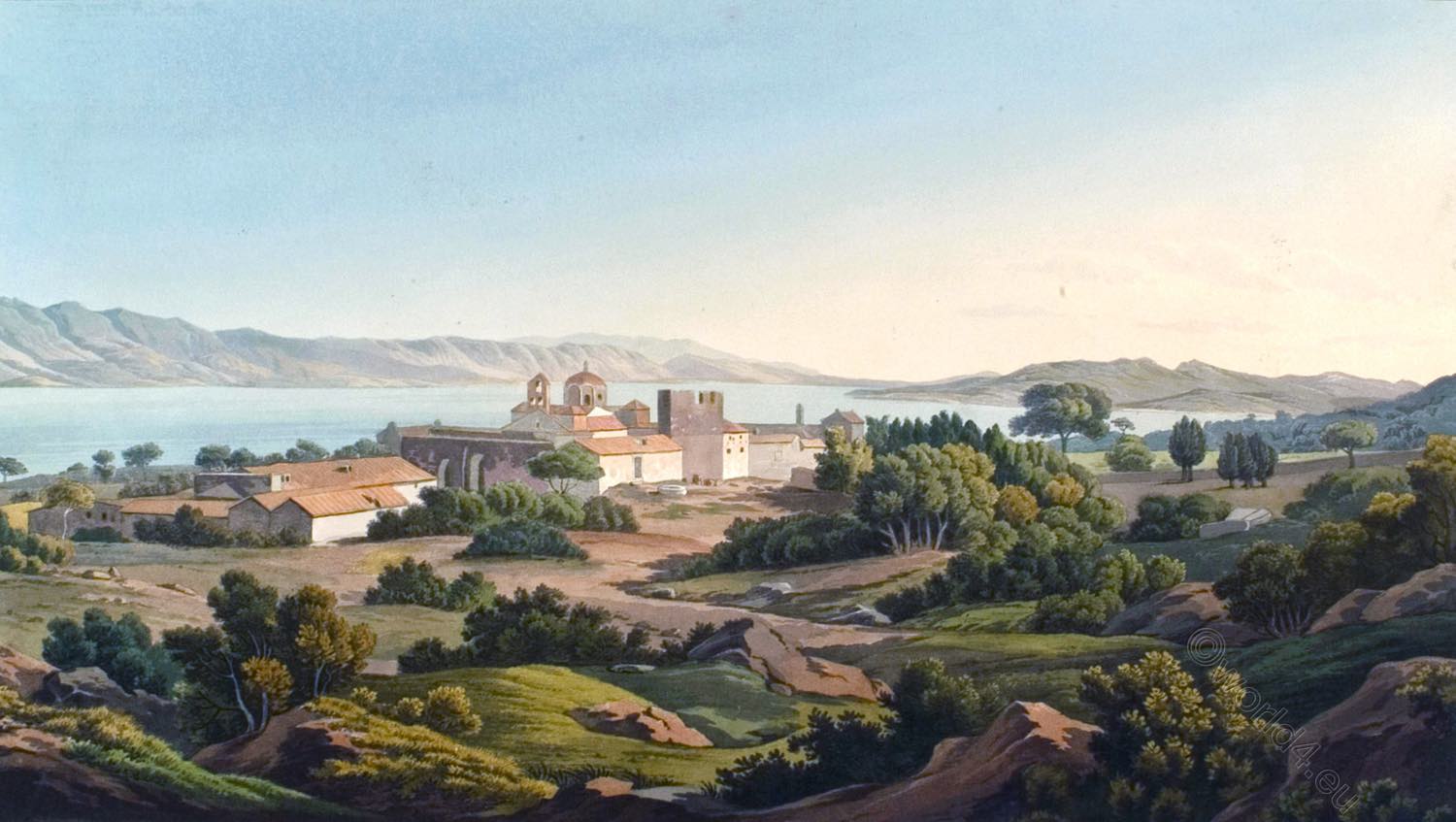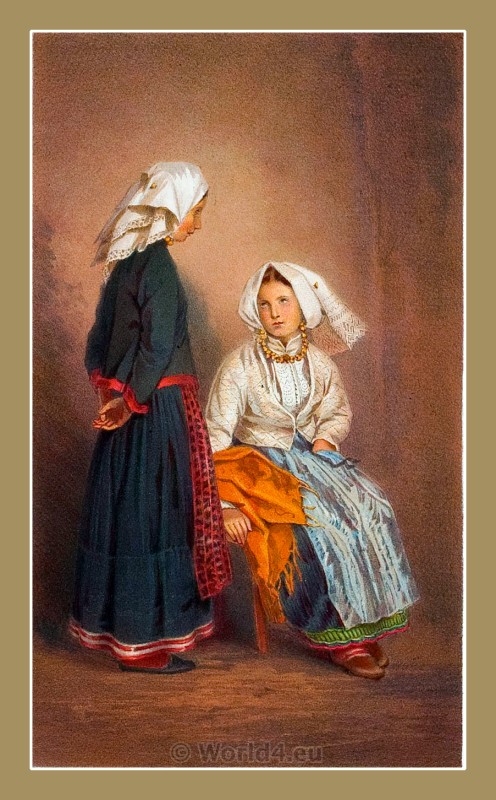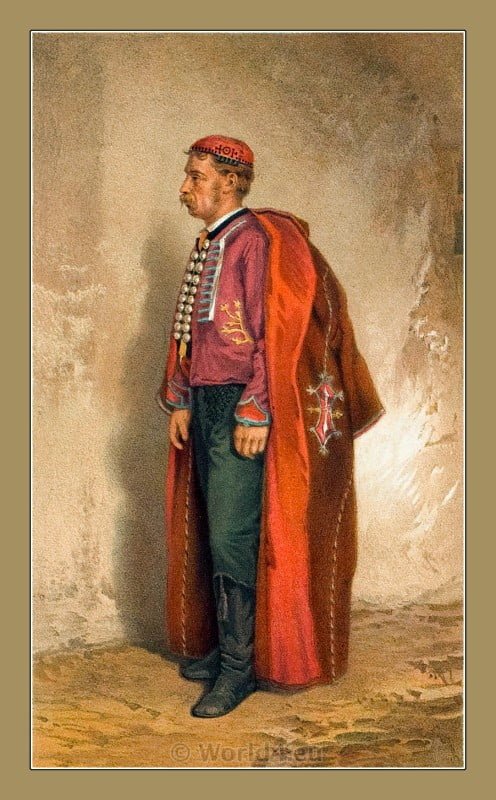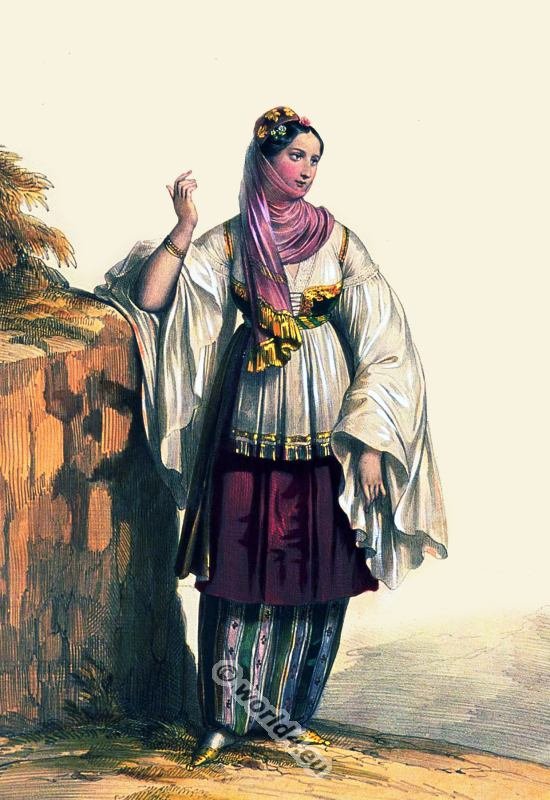Salamis is the home of the Homeric king Aianta of Telamonius and the tragic poet Euripides. However, it is also most famous for its eponymous naval battle of the allied Greek fleet, led by Themistocles, in 480 BC against the hostile Persian army, the result of which was the victory of the Greeks and the final end of the Persians’ expansionist plans.
The monastery of Faneromeni was built in the 17th century by Saint Laurentios (Lampros Kanelos) on the site where an icon of Our Lady is said to have been found. It was called “Faneromeni” (“the Appeared One”). The frescoes were completed by Lampros Kanelos in 1735.

MONASTERY OF PHAINEROMENE IN THE ISLAND OF SALAMIS
by Edward Dodwell.
THIS monastery was founded before the full of the eastern empire. It is situated on the northern side of the island of Salamis, a few hundred paces from the Eleusinian, or Megaric Gulf in the Aegean Sea, from the opposite side of winch the mountain rises, which, from its two pointed summits, was denominated Kerata, or “the Horns.”
This mountain brandies out towards Eleusis, the ruins of which are faintly distinguished, with ramifications of Panics shooting up in the distant view. The hills on the right form part of the island of Salamis. The trees and hushes that enliven the vicinity of the monastery, are the umbrella or stone-pine, and the lentiscus, juniper, and myrtle.
The palladium, or sacred relic of this sanctuary, is a miraculous picture of the Virgin, which they say was found in a perfect state of preservation at a great depth below the surface of the ground on which the monastery now stands. The interior of the church is gloomy and badly lighted, but is richly ornamented with lamps, and the usual daubs of saints, whose heads are encircled with large glories of silver and of brass.
The convent has apparently been erected on the site of a more ancient edifice. Some imperfect vestiges of antiquity and some fragments of Doric columns are observed in the vicinity. A lull, which rises behind the monastery, exhibits the fallen remains of walls and towers of considerable thickness and of high antiquity.
From the same spot the eye wanders with delight over the classic shores of the Saronic Gulf; nor can the spectator contemplate with indifference the waving lines of the Argolic mountains, with the Aerocorinthos ((gr. Ακροκόρινθος Akrokórinthos) and its isthmus, and the more distant summits of Arcadia glittering with snow.
Source: Views in Greece. Drawings by Edward Dodwell. Rod Well and Martin, London, 1821.
Discover more from World4 Costume Culture History
Subscribe to get the latest posts sent to your email.






